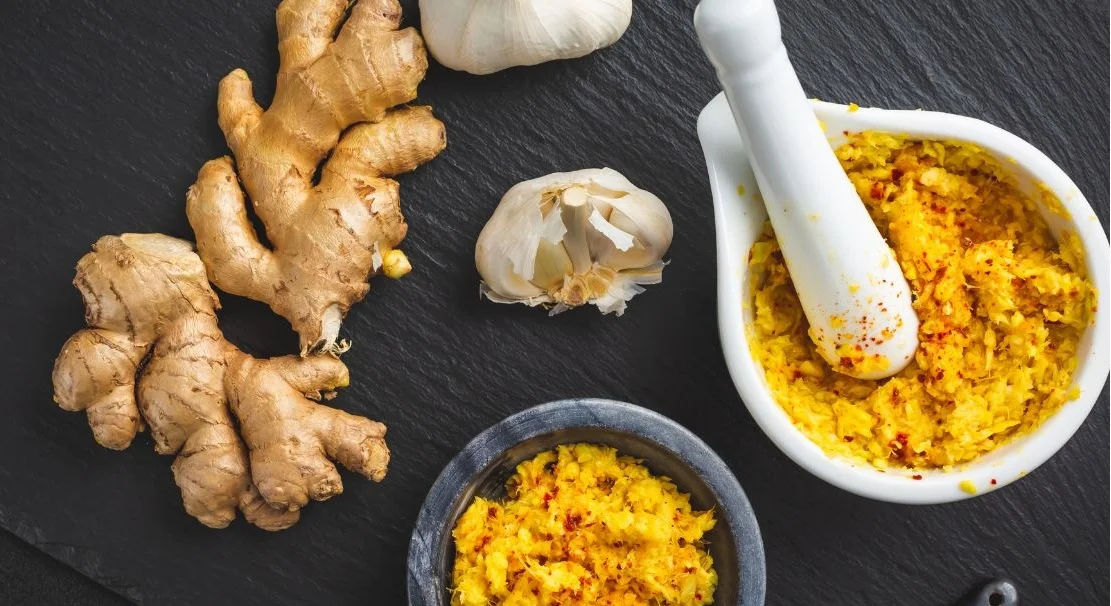Last Updated on: 4th August 2024, 02:49 pm
Dental issues are no joke. One of the most unsettling experiences that can instantly derail your day is a toothache. The intense pain that accompanies tooth decay or an infection can make even the most mundane tasks unbearable. But what if you could find relief with something as simple and common as garlic? Yes, garlic—the aromatic herb that takes your cooking to the next level—can also be your saving grace when it comes to toothaches. In this article, we’ll explore how to effectively make a garlic toothache remedy, what science has to say about it, and other alternative methods you can try for pain relief.
The Magical Compound: Allicin
Garlic contains a compound called allicin, which is released when the garlic is crushed, chopped, or chewed. Allicin has been shown to have potent antimicrobial properties, which can help combat the bacteria that often cause toothaches. A 2014 study even demonstrated that garlic extract was effective against oral pathogens that lead to dental diseases like periodontitis and oral thrush (Yamada & Azuma, 2014).

Allicin isn’t just an antimicrobial warrior; it also has anti-inflammatory capabilities. Inflammation is another culprit behind toothaches, often causing tissues to swell and pain to intensify. Allicin helps in reducing this inflammation, giving you much-needed relief from that throbbing toothache (Lanzotti, 2006).
How to Make A Garlic Toothache Remedy
The application is straightforward. Here’s a step-by-step guide:
-
- Peel and crush: Start by peeling a garlic clove and then crushing it to release the allicin.
- Apply: Place the crushed garlic directly onto the affected area. Be careful; it will sting a bit at first. Its natural compounds, including allicin, may help reduce pain and inflammation. Some people add a pinch of salt to the crushed garlic for added antimicrobial properties.
- Wait: Leave it in place for a few minutes.
- Rinse: Afterwards, rinse your mouth with warm water.
You can also use garlic combined with other homemade products to enhance the effect:
Garlic and olive oil mixture
-
- Mix crushed garlic with a few drops of olive oil to create a paste.
- Apply the paste to the aching tooth and surrounding area.
- Leave it for about 15 minutes before rinsing your mouth with warm water.
Garlic and salt rinse
-
- Dissolve a teaspoon of salt in warm water and add a few drops of garlic oil or crushed garlic.
- Use this solution as a mouthwash, swishing it around your mouth for 30 seconds before spitting it out.
- Repeat this process a few times a day for relief.
Garlic and clove oil combo
-
- Clove oil is known for its numbing properties and can complement garlic’s benefits.
- Mix a few drops of garlic oil and clove oil.
- Apply the mixture to a cotton ball and place it on the painful tooth.
- Leave it in place for 15-20 minutes.
Garlic and ginger paste
-
- Create a paste by mixing crushed garlic with ginger.
- Apply the paste to the affected area and leave it for a short duration.
- Rinse your mouth thoroughly with warm water.

While this is a tried-and-true home remedy for many, it’s important to note that garlic should not replace professional dental care. Using garlic can offer temporary relief, but it won’t solve underlying issues like cavities or infections that may be causing the toothache in the first place. If you are interested in knowing more about other natural remedies for tooth infections, click here.
Science Backs It Up
Multiple studies corroborate the efficacy of garlic in dental care. A study in the “Avicenna Journal of Phytomedicine” reported that garlic had comparable effects to that of antibiotics in fighting dental bacteria (Rahmani et al., 2015). Another research review published in “Pharmacognosy Reviews” validated the broad-spectrum antimicrobial activity of garlic (Mikaili et al., 2013).
However, it’s worth mentioning that while garlic shows promise, it’s not a one-size-fits-all remedy. It’s highly effective for bacterial-related toothaches; but if your toothache is due to other issues like a fractured tooth or an impacted wisdom tooth, garlic alone won’t be sufficient.
Alternative Remedies To Consider
-
- Salt water rinse: A solution of salt and warm water can act as an antiseptic, helping to relieve pain.
- Clove oil: Eugenol, a compound found in clove oil, can numb pain and reduce inflammation.
- Over-the-counter pain relievers: Ibuprofen or acetaminophen can be effective, but consult a health professional for the appropriate dosage.
If garlic isn’t your thing, or if you’re allergic to it, these alternatives can provide temporary relief. However, none of these solutions replace the expertise of a dental professional. It is essential to consult a dentist for proper diagnosis and treatment.

Consult a Dentist
-
- Underlying Issues: Toothaches can have various causes, such as cavities, gum disease, or dental abscesses. While garlic may offer temporary relief, it won’t address the root cause.
- Professional Advice: If you have a severe or persistent toothache, it’s crucial to consult a dentist. They can diagnose the issue and provide appropriate treatment, which may include antibiotics, fillings, or dental procedures.
- Preventive Care: Maintaining good oral hygiene, such as regular brushing and flossing, is essential to prevent toothaches in the first place.
Remember that while garlic may provide temporary relief from toothache-related pain due to its potential antibacterial properties, it should not replace professional dental care. If you’re experiencing a toothache, it’s advisable to consult a dentist for a proper diagnosis and treatment plan.
Caveats and Precautions
Garlic is generally safe to consume, but applying it directly to your gums and teeth can cause a burning sensation or even mild irritation. Always do a patch test before a full application. Additionally, garlic can interfere with certain medications, such as blood thinners. If you’re taking any medications for tooth infection, consult with your healthcare provider before using garlic as a remedy.
It’s crucial to remember that while garlic may provide temporary relief, it won’t treat the underlying issue. Dental issues are often indicative of broader health problems, so consult a healthcare professional for a comprehensive treatment plan.
Garlic as Part of Oral Care
While garlic may not be a direct toothache remedy, incorporating it into your diet as part of a balanced and healthy eating plan could contribute to overall oral health. Its antibacterial properties may help reduce the risk of dental infections.
Remember to maintain good oral hygiene practices, including regular brushing, flossing, and dental check-ups.
Conclusion
While the notion of using garlic as a toothache remedy might make some people scoff, the science supporting its efficacy is rather compelling. It’s a natural, cost-effective way to get quick relief from toothache agony. However, it’s essential to see a dentist for a thorough examination and appropriate treatment. Your teeth are too important to leave to chance!
Frequently Asked Questions
Yes because garlic has antibacterial and antimicrobial qualities. It has the potential to combat the bacteria responsible for dental pain. To use it, crush a clove of garlic until it forms a paste. Then, gently apply that paste to the affected area near the abscess.
Garlic houses an essential component called allicin. This substance has proven to be effective in balancing the flora of the mouth and controlling harmful bacteria that can lead to dental problems. In addition, garlic has antifungal and antiviral qualities, contributing to stronger and healthier teeth and gums.
Yes, anti-inflammatory properties. Contained within garlic we find diallyl disulfide, a substance that fights inflammation by restricting the actions of proinflammatory cytokines. If you experience pain or inflammation in muscles or joints, consider applying garlic oil to the affected area.
Garlic has antibacterial qualities that can help fight the bacteria responsible for dental pain. To make a garlic paste, simply crush a few cloves and combine them with a little water. Place this mixture on the tooth in question and allow it to act for 10 to 15 minutes before rinsing.
Contact Us
If you have any questions about using garlic toothache remedy or other dental topics, you can contact us at Channel Islands Family Dental as well as our page on Facebook. We look forward to your visit and we will make a timely diagnosis. Our dentists in Oxnard, Santa Paula, Ventura, Newbury Park, and Port Hueneme will be able to guide you toward the best treatment to take care of your health and give you back your best smile.
Bibliography
- Yamada, Y., and Azuma, K. (2014). Evaluation of the in vitro antifungal activity of allicin. Annals of Clinical Microbiology and Antimicrobials, 13(1), 1-5.https://ann-clinmicrob.biomedcentral.com/articles/10.1186/1476-0711-13-1
- Lanzotti, V. (2006). The analysis of onion and garlic. Journal of Chromatography A, 1112(1-2), 3-22.https://www.sciencedirect.com/science/article/pii/S0021967305012070
- Rahmani, A. H., Aldebasi, Y. H., Srikar, S., Khan, A. A., and Aly, S. M. (2015). Aloe vera: Potential candidate in health management through the modulation of biological activities. Pharmacognosy Reviews, 9(18), 120.https://www.ncbi.nlm.nih.gov/pmc/articles/PMC4557234/
- Mikaili, P., Maadirad, S., Moloudizargari, M., Aghajanshakeri, S., and Sarahroodi, S. (2013). Therapeutic uses and pharmacological properties of garlic, shallot, and their bioactive compounds. Current drug discovery technologies, 10(1), 30-42.https://pubmed.ncbi.nlm.nih.gov/23036051/
- Mikaili, P., Maadirad, S., Moloudizargari, M., Aghajanshakeri, S., & Sarahroodi, S. (2013). Therapeutic uses and pharmacological properties of garlic, shallot, and their biologically active compounds. Iranian journal of basic medical sciences, 16(10), 1031–1048.https://www.ncbi.nlm.nih.gov/pmc/articles/PMC3874089/
- Gokhman, R. y Frank, C. (2020). Can Garlic Treat the Pain from Toothaches? Healthline. https://www.healthline.com/health/garlic-for-toothache
- Healthline. (Feb 27, 2020). Garlic for Toothache: Does It Work? [Website].https://www.healthline.com/health/garlic-for-toothache



